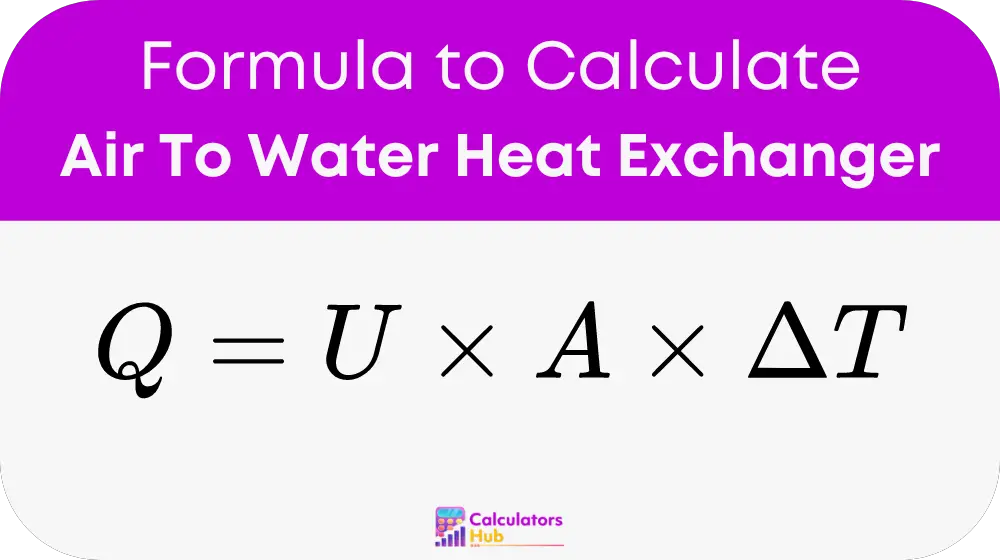Air to water heat exchangers are crucial in a variety of systems, such as heating, ventilation, air conditioning (HVAC), and various industrial applications. They allow heat transfer from air to water without the two fluids mixing. This calculator assists in evaluating the heat transfer rate required for specific setups, enhancing system efficiency and reducing energy consumption.
Formula of Air To Water Heat Exchanger Calculator
To determine the heat transfer rate (Q) in an air-to-water heat exchanger, use the following formula:

where:
- Q is the heat transfer rate in watts or BTUs per hour,
- U is the overall heat transfer coefficient in watts per square meter per degree Celsius or BTUs per hour per square foot per degree Fahrenheit,
- A is the heat exchanger surface area in square meters or square feet,
- ΔT is the temperature difference between the hot and cold fluids in degrees Celsius or Fahrenheit.
Detailed Calculation Steps:
- Determine the overall heat transfer coefficient (U): This value often depends on the materials used and the flow characteristics of the heat exchanger, usually provided by the manufacturer.
- Calculate the heat exchanger surface area (A): This area is where the heat transfer occurs, calculated based on the heat exchanger’s dimensions and configuration.
- Calculate the temperature difference (ΔT): This is the difference in temperature between the incoming hot fluid and the incoming cold fluid.
Table for General Terms
| Term | Definition |
|---|---|
| Heat Transfer Rate (Q) | Amount of heat transferred per unit time in watts or BTUs/hour |
| Heat Transfer Coefficient (U) | Measures how well the exchanger can transfer heat (watts/m²°C or BTUs/hour ft²°F) |
| Surface Area (A) | Total area available for heat transfer in m² or ft² |
| Temperature Difference (ΔT) | Difference in temperature between hot and cold fluids in °C or °F |
Example of Air To Water Heat Exchanger Calculator
An engineer needs to calculate the necessary heat transfer rate for an air-to-water heat exchanger in a commercial building, with these parameters:
- U = 250 watts/m²°C
- A = 100 m²
- ΔT = 20°C
The calculation would be:
Q = 250 * 100 * 20 = 500,000 watts
This means the heat exchanger needs to transfer 500,000 watts of heat from the air to the water to maintain the desired conditions.
Most Common FAQs
A1: The key factors include the overall heat transfer coefficient. The heat exchanger’s surface area, and the temperature difference between the entering fluids.
A2: By optimizing the design and parameters of the heat exchanger, the calculator ensures efficient heat transfer. Potentially lowering energy use and operational costs.
A3: Yes, it can help evaluate the performance of existing systems and guide necessary upgrades to enhance efficiency and capacity.